Inside the 'coffin homes' of the world's most populated city
Hong Kong: overcrowded and overpriced
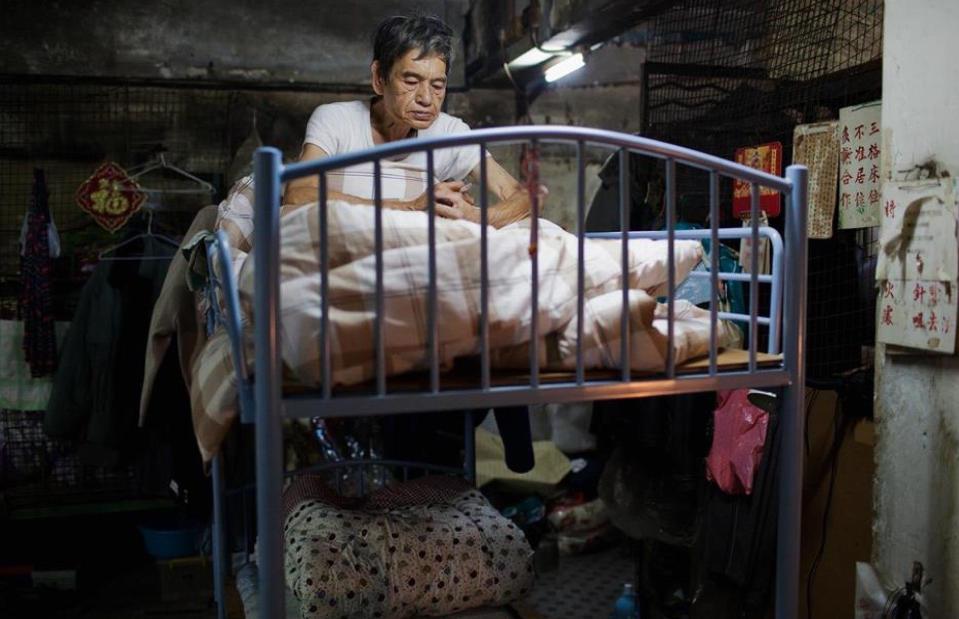
Daniel Berehulak / Getty Images
Hong Kong is among the world’s most prosperous countries, but it’s also a tiny coastal area that's struggling to cope with the influx of people who want to relocate to this economic superpower. Housing over seven million residents in an area of 1,106 km² is a challenge that requires extraordinarily inventive solutions, from luxury micro-apartments built into old drainpipes and co-housing initiatives, to the tiny coffin and cage homes where you'll find the city’s poorest. Yet, it's the most expensive city in the world to live in according to 2023 research by Mercer.
Read on and let’s take a look at what homes are like in this overcrowded city…
The most expensive city in the world

Alex Ogle / AFP / Getty Images
Thanks to severe covid restrictions, at the end of 2022 the average price of a home in Hong Kong had dropped to its lowest point in five years – but that's still more than HK$7.69 million (US$981k/£780k). A shortage of housing and the huge demand for properties mean ordinary citizens can't even dream of getting on the property ladder.
A lack of land

Our Hong Kong Foundation
This artist’s impression outlined in yellow shows the plan for the project known as Lantau Tomorrow Vision, which aims to create a 2,500-acre artificial island to ease Hong Kong’s housing troubles. Estimated to cost around HK$624 billion (US$79bn/£71bn), the scheme could add up to 260,000 flats to the country's housing capacity. Work is scheduled to begin on the ambitious project in 2026.
Hong Kong’s property market is sky high

ANTHONY WALLACE / AFP / Getty Images
Despite the shortfall, there are still ultra-luxury homes available for the super-rich at the higher end of the market. But because of the sheer number of people living in Hong Kong, even small apartments are becoming unaffordable for ordinary people. A survey conducted by the Society for Community Organization found that the median income in Hong Kong is HK$9,166 ($1.2k/£930) per month, which does not go far in such an oversubscribed city.
Record-breaking prices
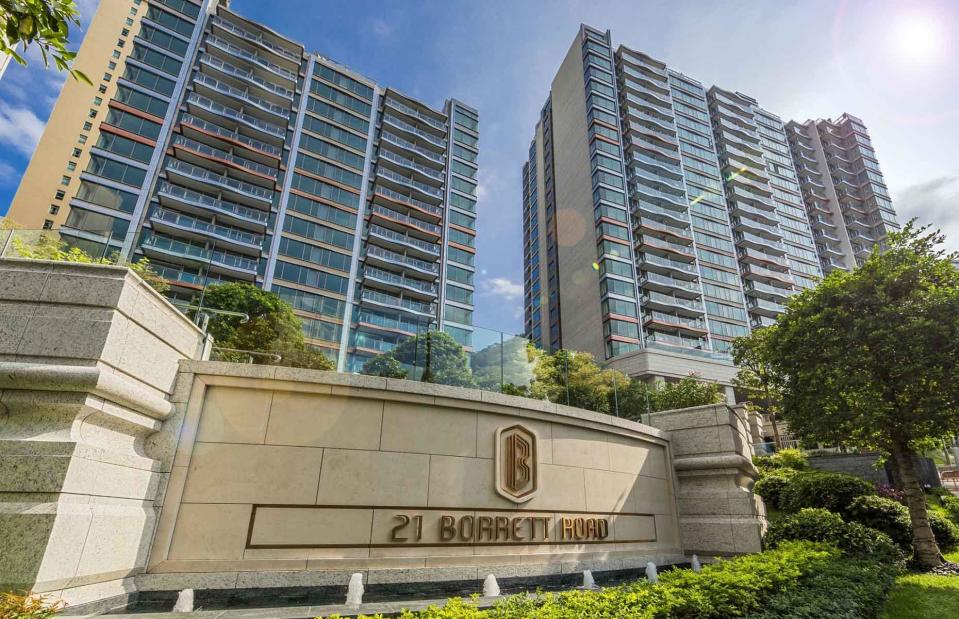
CK Asset Holdings
In February 2021, a luxury apartment in CK Asset Holdings’ 21 Borrett Road residential project was sold for HK$459 million (US$59m/£47m). Measuring 3,378 square feet, the hefty price tag means each square foot cost HK$136,000 (US$17.4k/£13.8k), setting a new record for the most expensive home per square foot in Asia. This beat the previous record set in November 2017, when a four-bedroom home in the Mount Nicholson development in The Peak sold for just shy of HK$1.2 billion (US$153m/£121.7m), working out at just over HK$126,000 (US$16k/£12.8k) per square foot.
An eye-watering view
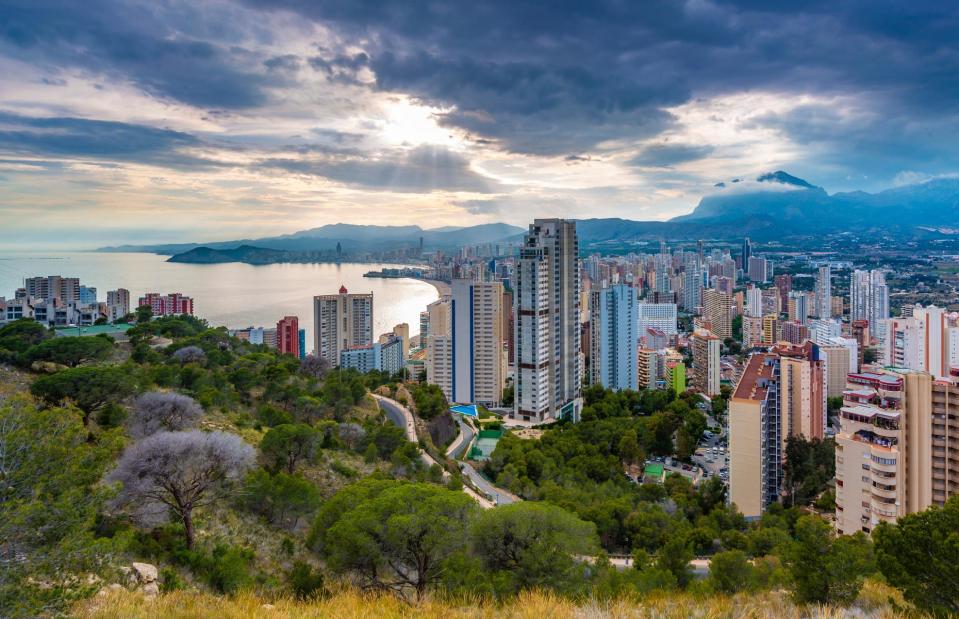
Jose Feito / Shutterstock
For renters as well as buyers, the most sought-after—and thus pricey—location in the city is The Peak. The highest point on Hong Kong Island, it comes with cooling maritime breezes and city views. But, for the privilege of soaking up the view, you can expect to spend three or four times the amount you would on rent in London.
Expensive and exclusive
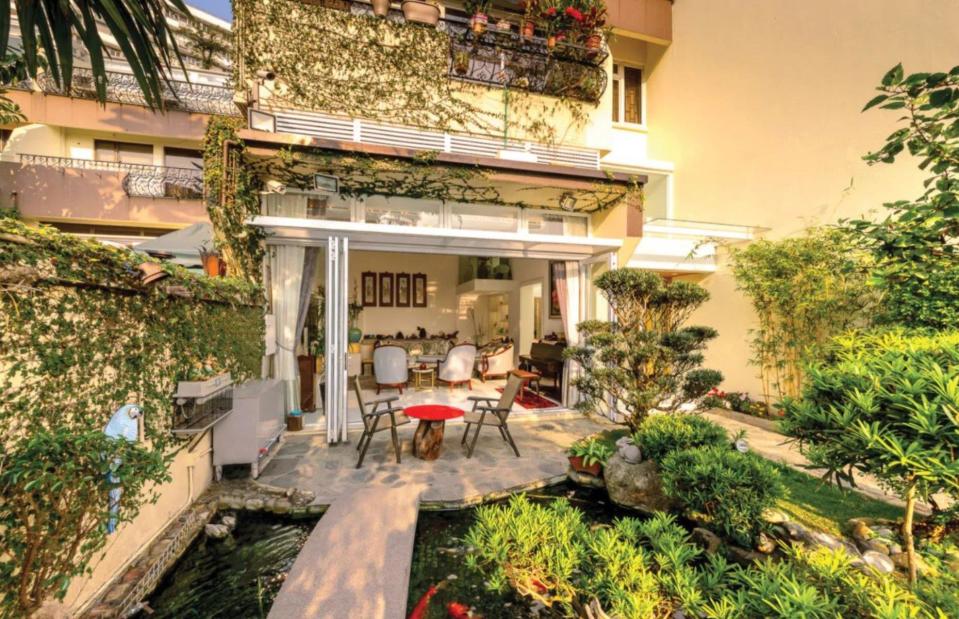
Sotheby's International Realty
If you've got the money, you can still find spacious homes for sale in this densely populated city though. This plush four-bedroom family home in The Peak was on the market for HK$260 million (US$33.2m/£26.4m) until recently, and can now be rented for HK$130,000 (US$16.6k/£13.2k) per month.
Little luxuries
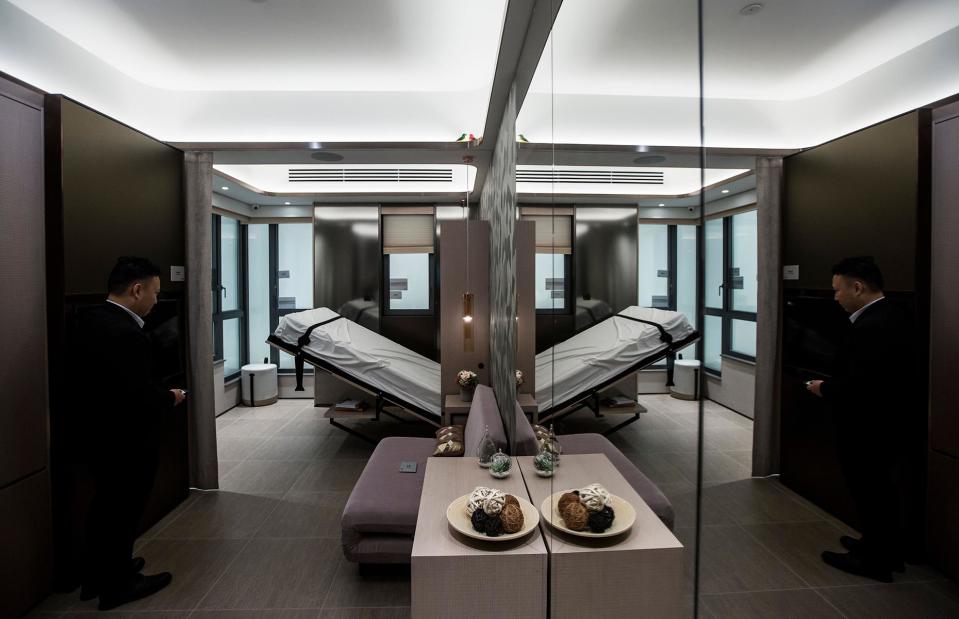
ISAAC LAWRENCE / AFP / Getty Images
Luxury properties are always available for those that can pay, but there's an increased demand for luxury on a smaller scale in Hong Kong. This narrow flat is in a new property development in the Kowloon district of Hong Kong. The cramped financial hub regularly tops the list of the least affordable housing in the world.
Design solutions

EDGE design / Sun Hung Kai Properties
A lack of space is always going to be an issue in Hong Kong, but that doesn't mean a shoebox home can't still feel luxurious. Property developers are turning to designers to help make these tiny homes more palatable and upmarket for their well-off clientele.
Opulent materials
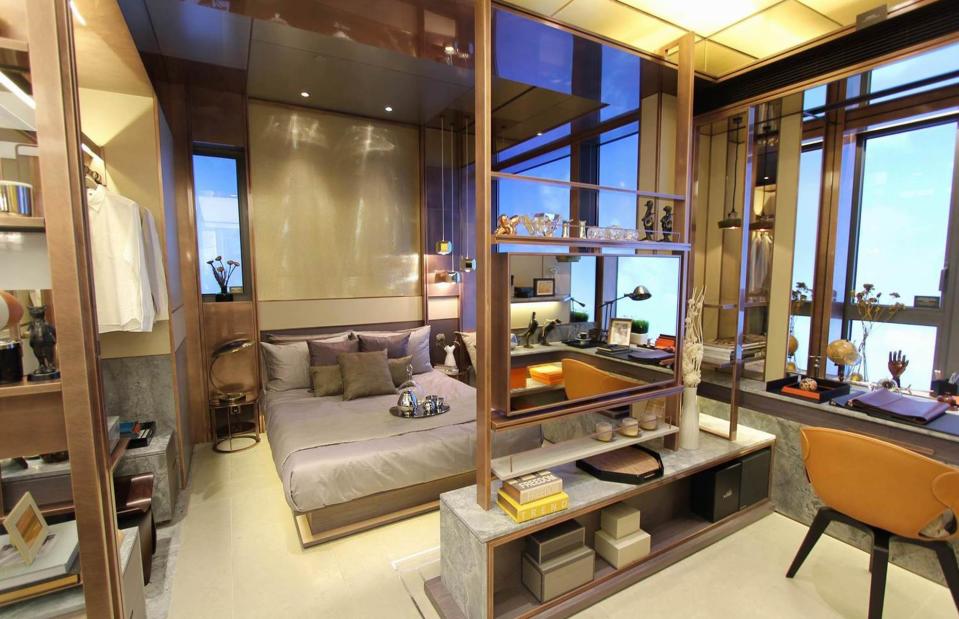
EDGE design / Sun Hung Kai Properties
This project, known as The Wings II, uses every expert designer trick in the book to make these snug apartments feel indulgent. The units were originally selling for HK$15,000 ($1.9k/£1.5k) per square foot after their completion back in 2012. The most expensive flat, which measured more than 1,200 square feet, was listed for sale at HK$18.3 million ($2.3m/£1.9m).
Packing in the young professionals
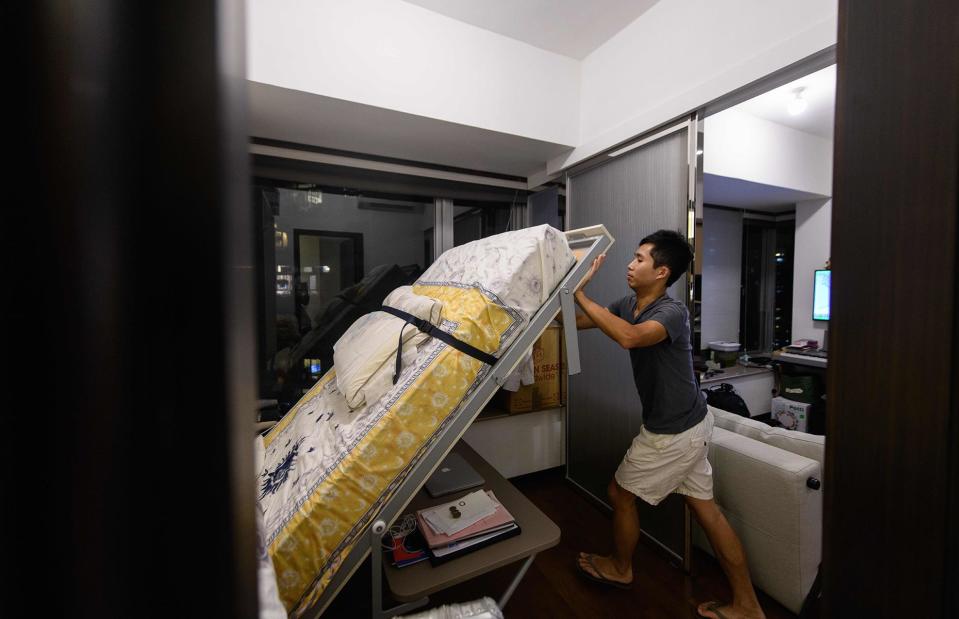
ANTHONY WALLACE / AFP / Getty Images
Finance worker Adrian Law, 25, puts away the wall bed in his studio apartment in a new development in the gentrified Sai Ying Pun neighbourhood of Hong Kong, for which he paid more than HK$5.9 million ($753k/£598k) two years ago.
'Nano-flats' are the norm, not the exception

ANTHONY WALLACE / AFP / Getty Images
Adrian's living situation is far from unusual. As house prices spiral in Hong Kong, young professionals across the city are residing in ever-shrinking spaces, with box-like "nano-flats" and co-shares touted as fashionable solutions to the affordable housing crisis.
The rise of the tower block
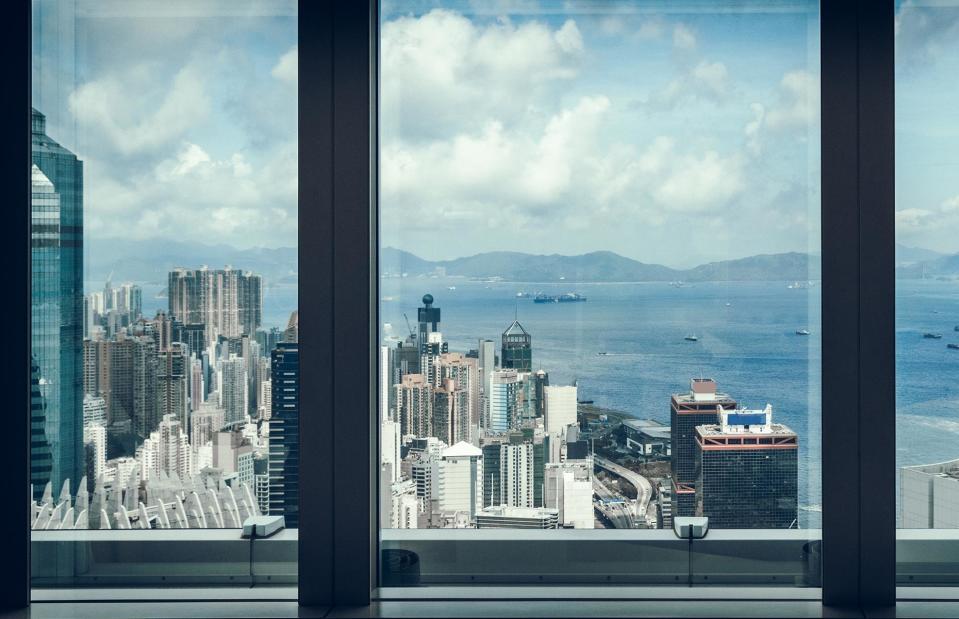
fanjianhua / Shutterstock
But it's not just the super-wealthy who want to live in the city. There are still plenty of locals too—so how do they cope with the city's staggering housing costs? High-rise homes are the most common form of accommodation for the average resident, but they can be cramped and overcrowded, and landlords are known to regularly take advantage of the high demand.
Living on top of each other
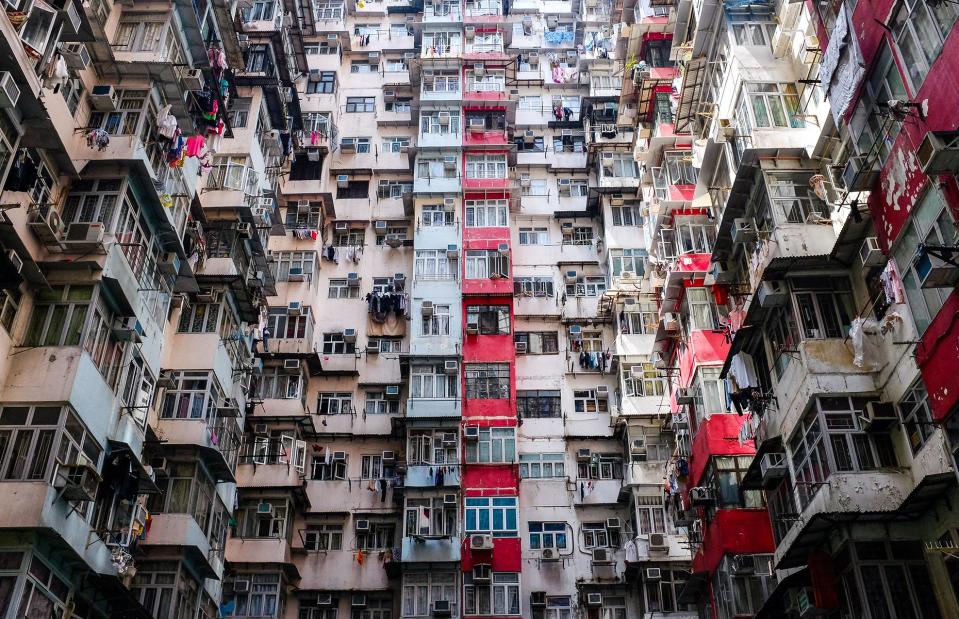
oath_sarun / Shutterstock
Even regular apartments are generally very small, particularly in the popular central areas. By way of modest luxury, you can expect a small balcony, but often the view is simply of your neighbours. For the most part, residents are used to close quarters and small spaces, so they're adaptable when it comes to new housing solutions, though some alternative living arrangements have made headlines...
Hong Kong’s tiny ‘coffin’ apartments
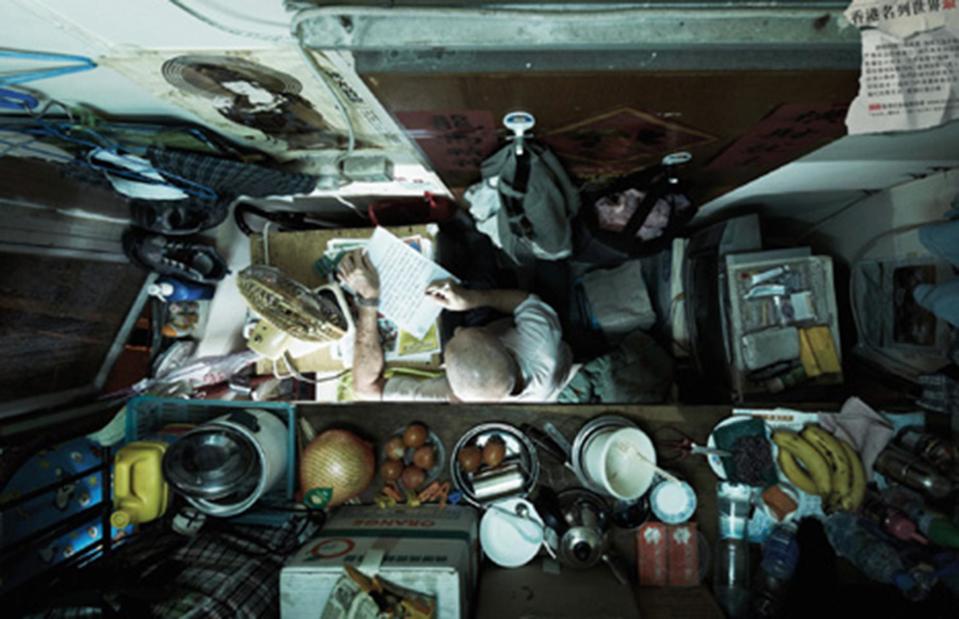
Society for Community Organization / Benny Lam
In the past few years, shocking pictures have emerged out of Hong Kong, documenting residents living in what have been dubbed "coffin" homes—subdivided apartments with very little room to move, let alone live. It’s estimated that around 200,000 people reside in cramped conditions like this in Hong Kong.
Hong Kong’s tiny ‘coffin’ apartments
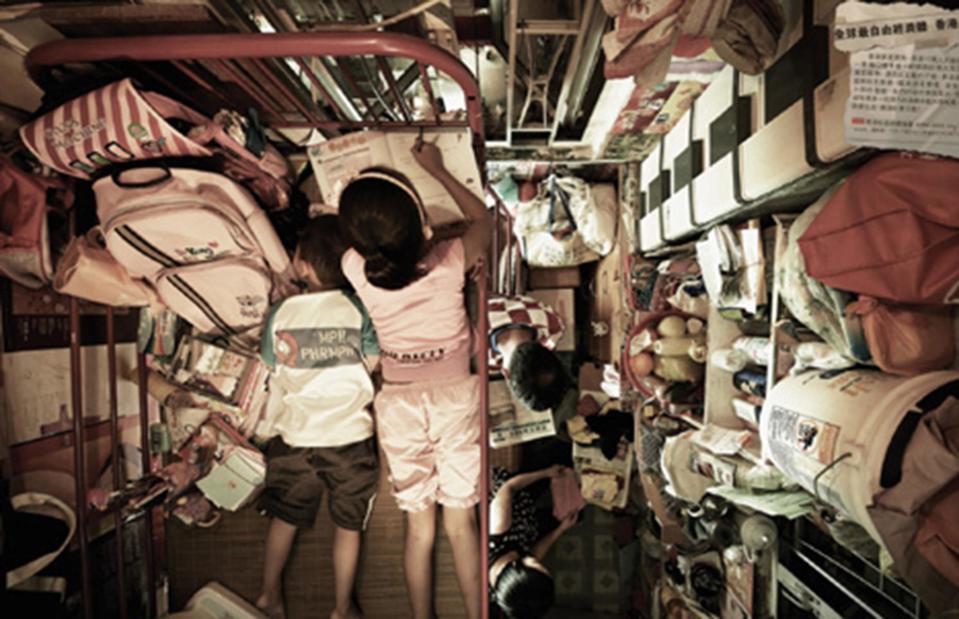
Society for Community Organization / Benny Lam
The "apartments" are usually bigger units divided up into such small areas that those living in them can’t even stretch out their legs fully. These claustrophobic cubicles tend to cost renters a few hundred dollars a month.
Hong Kong’s tiny ‘coffin’ apartments

Society for Community Organization / Benny Lam
The Society for Community Organization (SoCO) worked with photographer Benny Lam on a new project to further highlight the problems faced by those priced out of the rental market in Hong Kong. From 2012 to 2015, Lam captured shocking images of the living conditions in the city, including in the infamous coffin homes.
Hong Kong’s tiny ‘coffin’ apartments
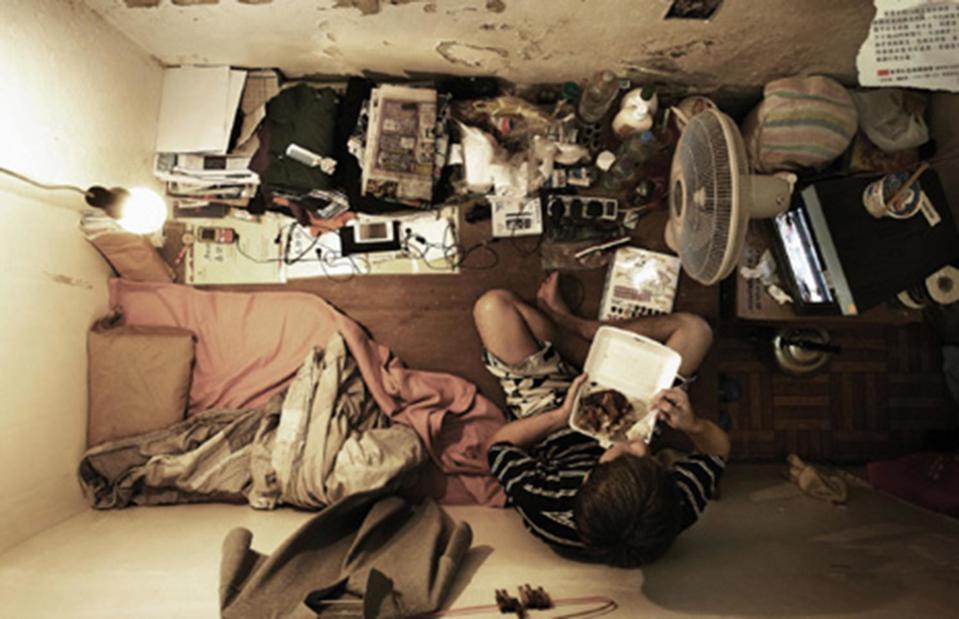
Society for Community Organization / Benny Lam
A 400-square-foot flat can be subdivided to accommodate nearly 20 double-decker-sized sealed bed spaces, sometimes partitioned with wood or even wire. Kitchen and toilet units are usually a similar size and shared by the inhabitants of several cubicles. Throughout the coronavirus pandemic—during which densely populated Hong Kong reported over 2.8 million cases of Covid-19 and 13,120 deaths as of January 2023—residents were confined to these tiny, claustrophobic spaces.
Hong Kong’s tiny ‘coffin’ apartments
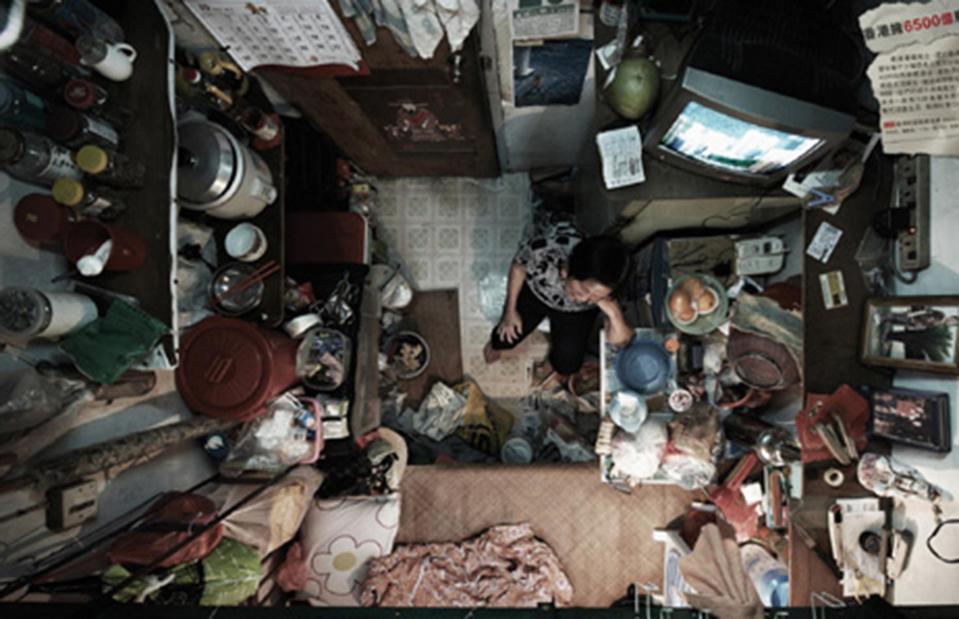
Society for Community Organization / Benny Lam
These squalid and sometimes dangerous conditions make it difficult to understand why the Hong Kong government hasn't done more to tackle the housing crisis. While some measures have been taken to increase social housing and control rents, they've done little to solve the problem. More affordable accommodation is still desperately needed.
Hong Kong's cage homes
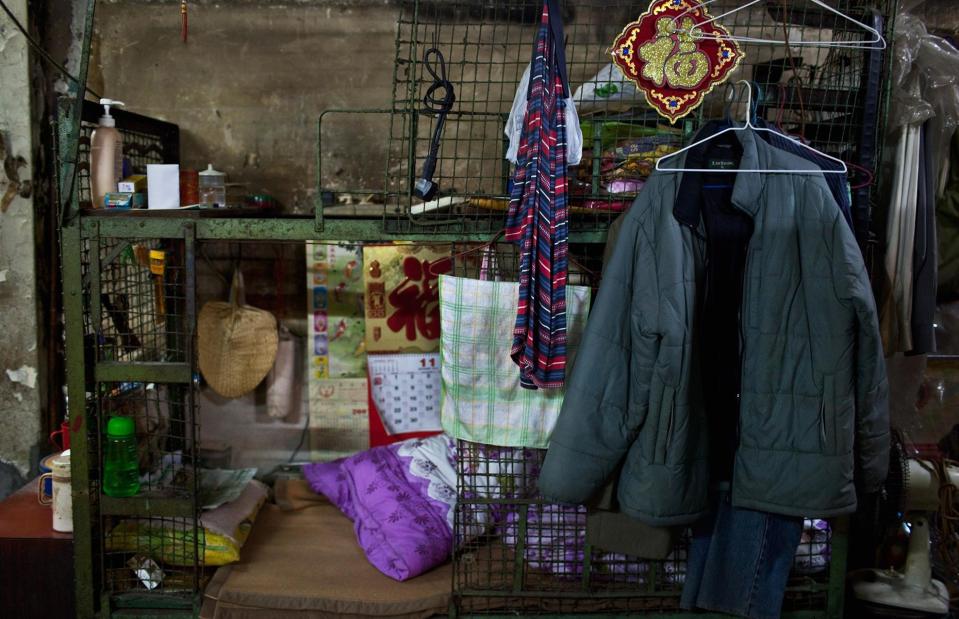
Daniel Berehulak / Getty Images
Hong Kong's property prices have risen to such an extreme that the city's poorest residents are even sleeping in tiny wire cages. The rampant increase in new luxury development has led to a shrinking supply of older, cheaper blocks, so even these desperately meagre lodgings may soon disappear.
Hong Kong's cage homes
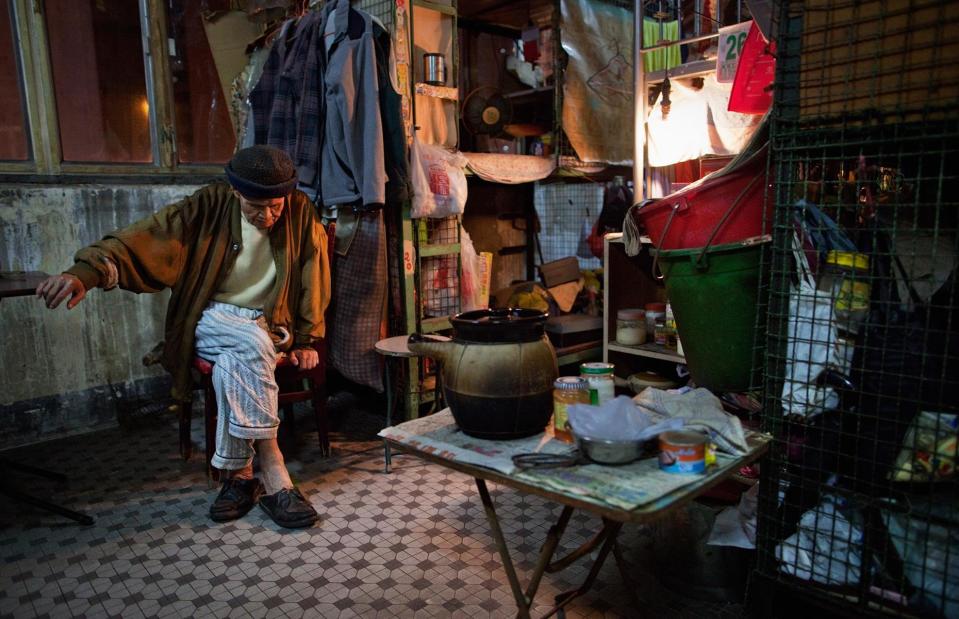
Daniel Berehulak / Getty Images
78-year-old Leung Shu sits beside his cage as he prepares to settle in for the evening on the apartment floor that he shares with four others. Thousands of people living in 15-square-foot cubicles or cages are being forced to vacate premises, as lots are steadily sold off to developers and low-cost accommodation becomes more difficult to find due to the increasing cost of rent. The average prison cell in the city measures 75 square feet, throwing these grim living conditions into sharp relief.
Hong Kong's cage homes

Daniel Berehulak / Getty Images
An elderly resident relaxes in his bunk bed, which was donated by the Society for Community Organization. Approximately 1,000 or so people are still estimated to live in squalid and cramped conditions in old tenement flats as Hong Kong's staggering wealth gap widens. This inhospitable situation was exacerbated during the coronavirus pandemic as it's nearly impossible to self-isolate in these suffocating living conditions.
Hong Kong's cage homes
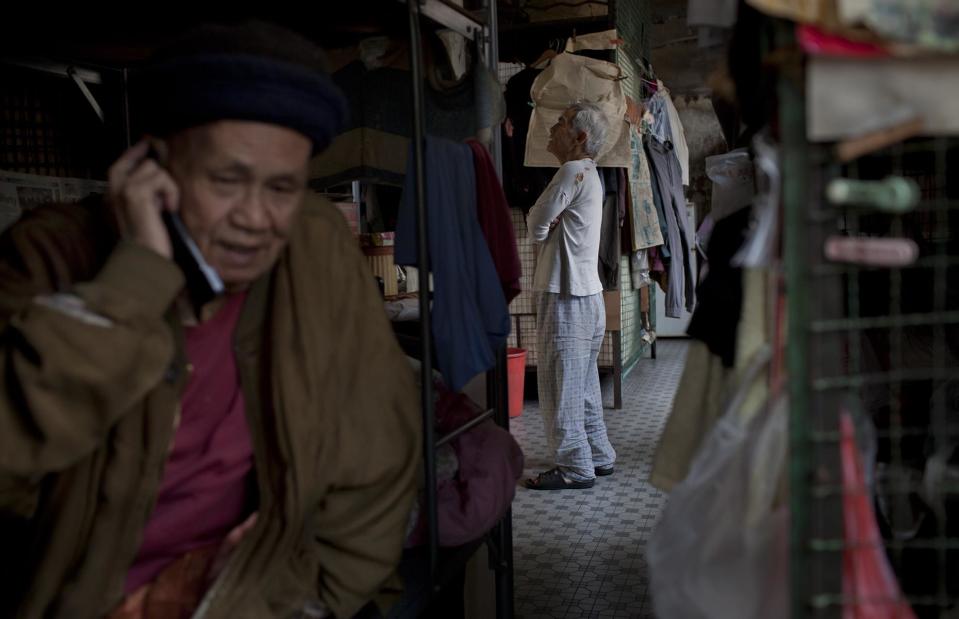
Daniel Berehulak / Getty Images
These urban slums are at the most extreme end of the housing crisis in Hong Kong—a far cry from the incredible levels of luxury enjoyed by the wealthy. But now there’s a new initiative that’s growing in popularity in the region, with students, travellers, entrepreneurs and young businesspeople opting to co-live to afford to stay in the city.
Co-living communities

Synergy Biz Group
Co-living is about to become standard practice, with bankers taking a leaf out of students’ books and signing up to new developments in the city, usually sharing with three to four other people. According to Keith Wong, co-founder of the Synergy Biz Group Ltd, young finance workers are flocking to the co-living lifestyle, both for financial and social reasons. Dormitory-style bunk beds are private areas, usually with designated storage, but all other spaces are communal.
Co-living communities
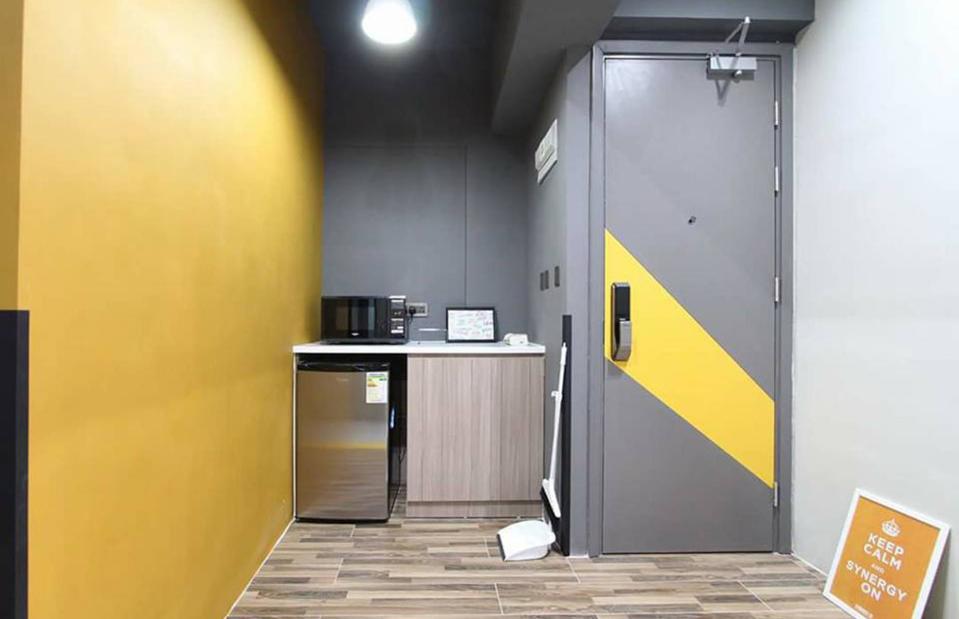
Synergy Biz Group
The Bibliotheque co-living development in the Yau Ma Tei district of Hong Kong is the newest such tiny living community. The project cost HK$150 million ($19m/£15.2m) and involved the conversion of two five-storey buildings, creating space for 166 beds across 15 units. The monthly rent starts from HK$4,000 ($510/£405), which covers regular cleaning and management services.
Co-living communities
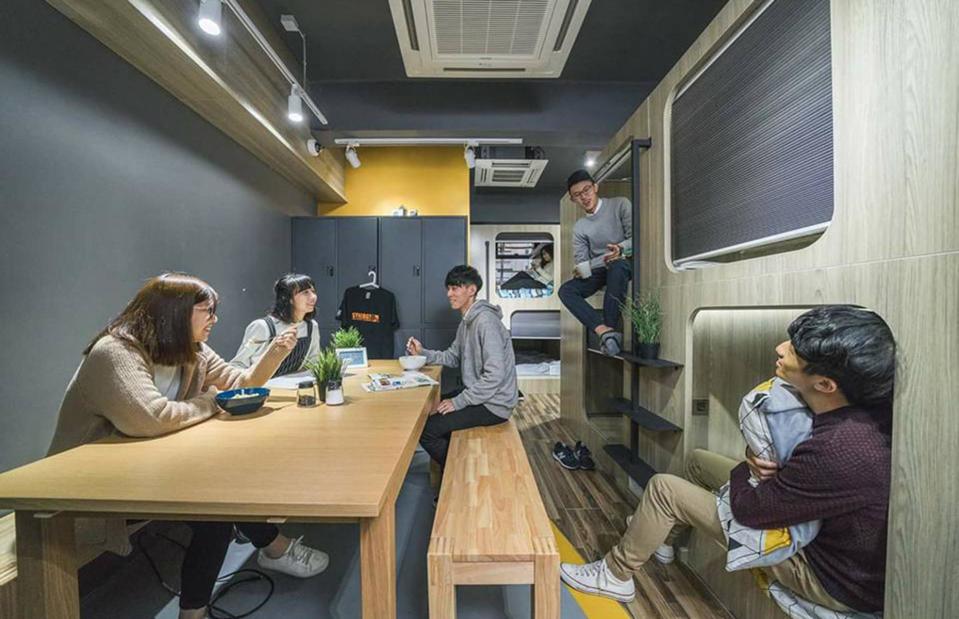
Synergy Biz Group
One of its architects, Addie Cheng, explained that much thought has been put into the fun, social side of the building. “Each floor is designed to encapsulate a different theme, ranging from design and cooking, movies, fashion to sports, and is reflected in the library of books on display,” Cheng said.
Co-living communities
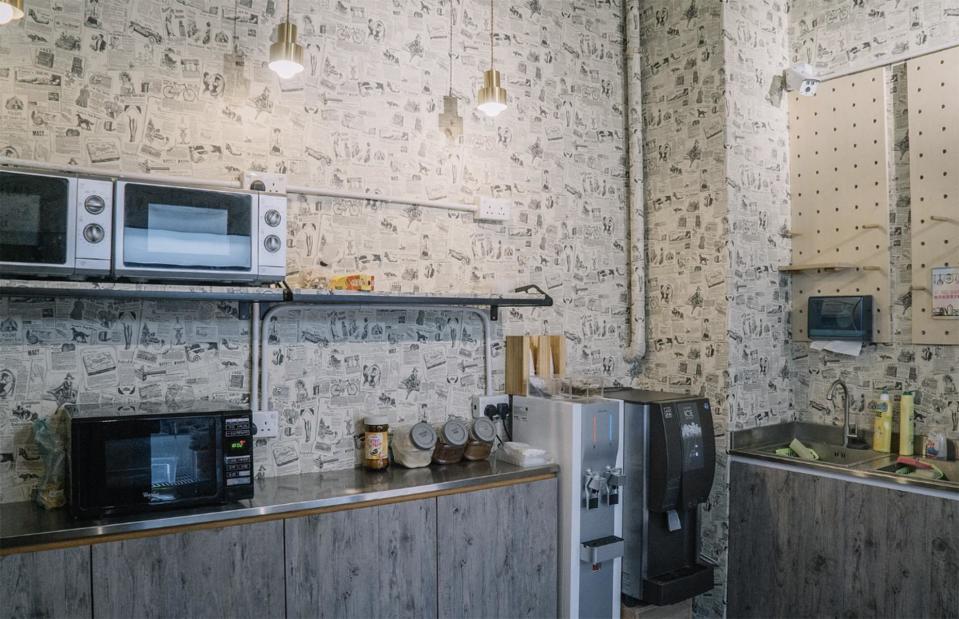
miniopshk.com
Larger than Bibliotheque, but following the same general concept, Mini Ocean Park is a co-living space in Wong Chuk Hang in the south of Hong Kong. This slightly more upmarket option is a conversion of 18 former luxury apartments into 270 units by Filipino tycoon Lucio Tan’s Eton Properties.
Co-living communities
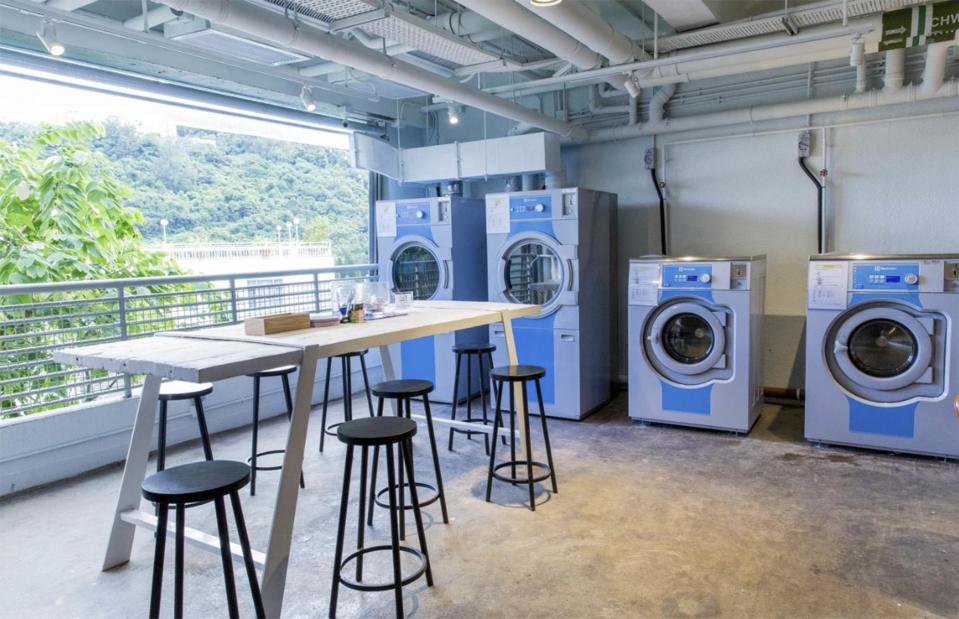
miniopshk.com
It’s more affordable, but you could hardly say it was cheap. Here, a private room of 80 to 100 square feet can cost HK$8,500 ($1.1k/£862) a month. The ground floor features a common area with vending machines for snacks, washing machines and couches for socialising and hanging out.
Co-living communities
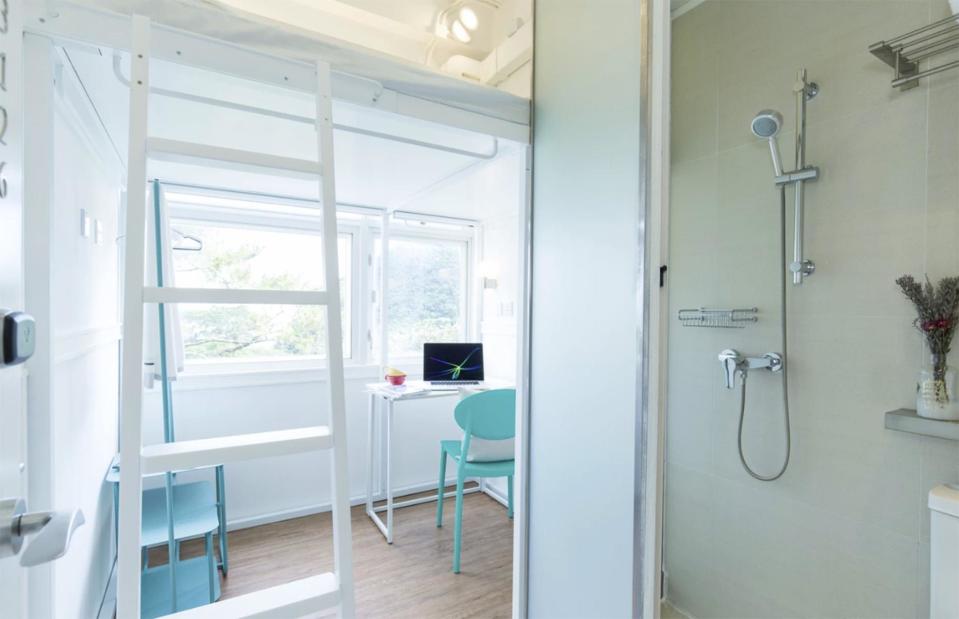
miniopshk.com
Most of the initial sign-ups are university students, according to Eton marketing manager Cynthia Cheung, but young professionals are getting in on the act. “It’s a new lifestyle experience for young people. We will provide 24-hour security for them, unlike subdivided flats in poorly managed, ageing buildings.”
Co-living communities
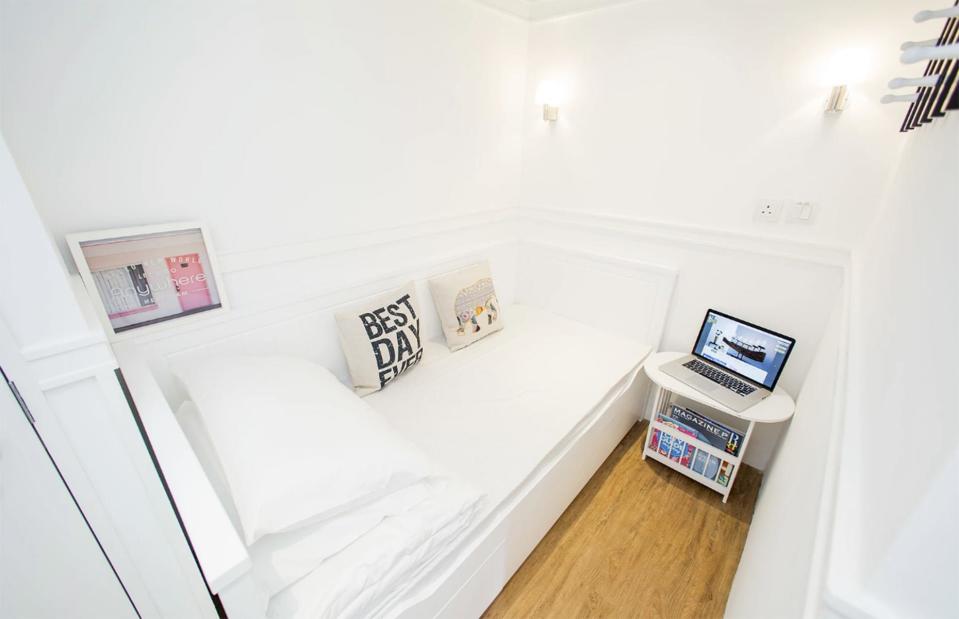
miniopshk.com
Also known as "nano flats", the most expensive apartments have sea views and can accommodate two residents. Cheaper options usually involve sharing with more people. It’s simple mathematics for the tycoons, enabling more people to be packed into the former luxury building, which consequently generates a higher rental yield.
Campus co-living quarters
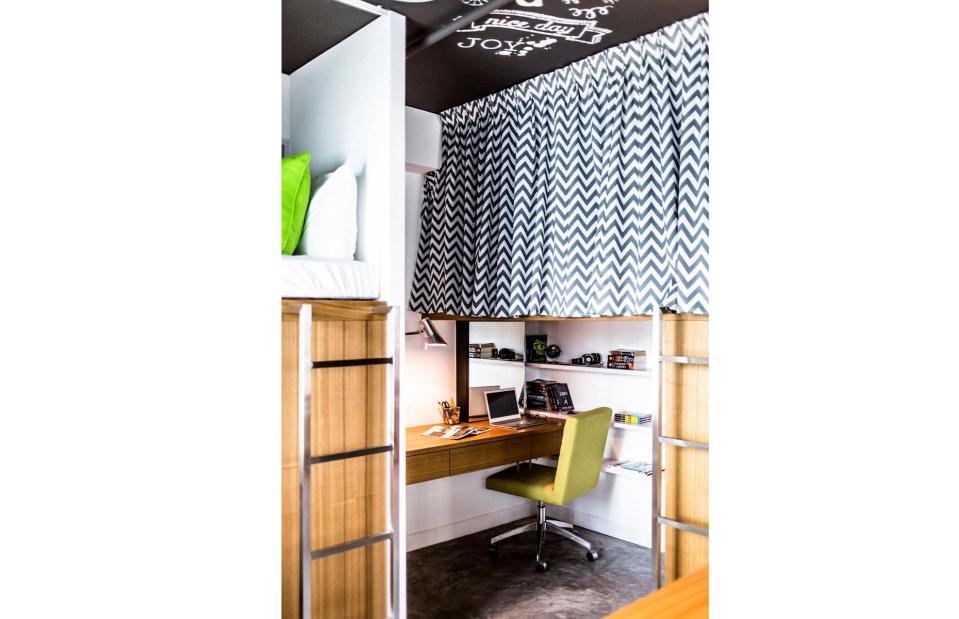
Campus HK
Elsewhere in Hong Kong, Campus is a tastefully decorated modern co-living space in Tsuen Wan. Space-saving rooms are shared by four guests, and beds are integrated into the main rooms, ensuring an open-plan, sociable experience.
Campus co-living quarters
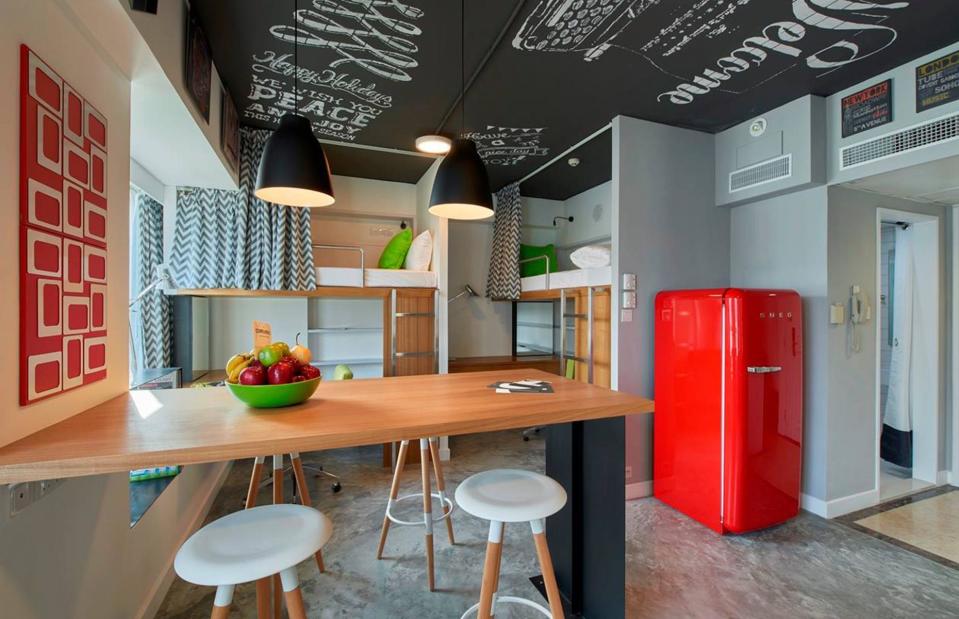
Campus HK
All sleeping spaces come equipped with individual lockable drawers, storage shelves and a hanging rail, as well as individual reading lights, a study desk and a chair. Curtains can be drawn across the bunks for privacy.
Campus co-living quarters

Campus HK
This shared residence is designed with long-term living in mind and is a popular choice with students. One of its main draws is that it comes with access to a swimming pool and fitness suite, while a shuttle bus allows easy access to Hong Kong's most important locations.
Campus co-living quarters
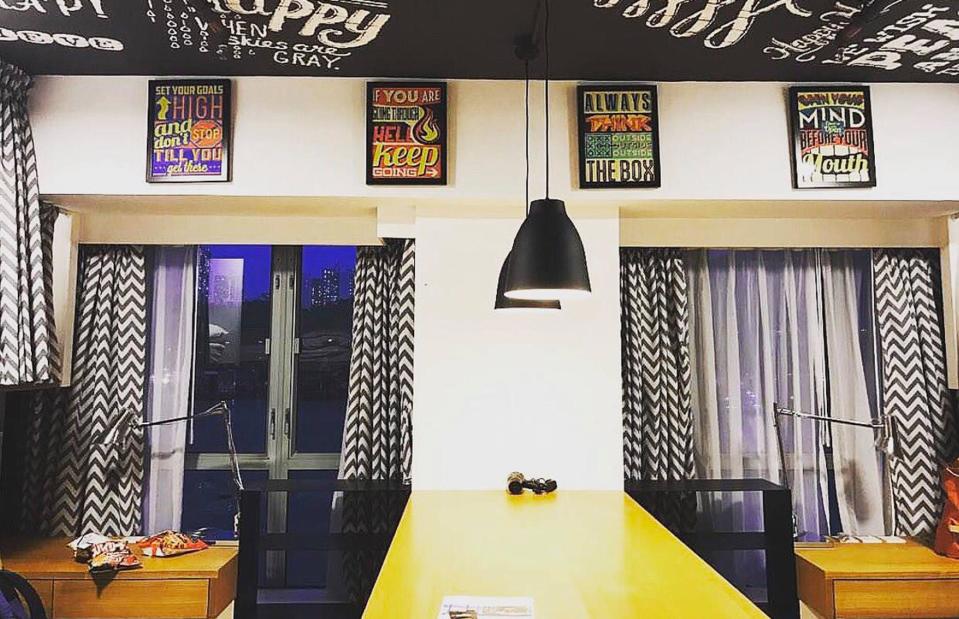
Campus HK
To build a sense of community, life at Campus revolves around socialising and the management regularly organise group activities such as movie nights and boat trips. This also appeals to international travellers who sometimes stay in the co-living space for a more authentic experience of life in Hong Kong.
OPOD drainpipe houses
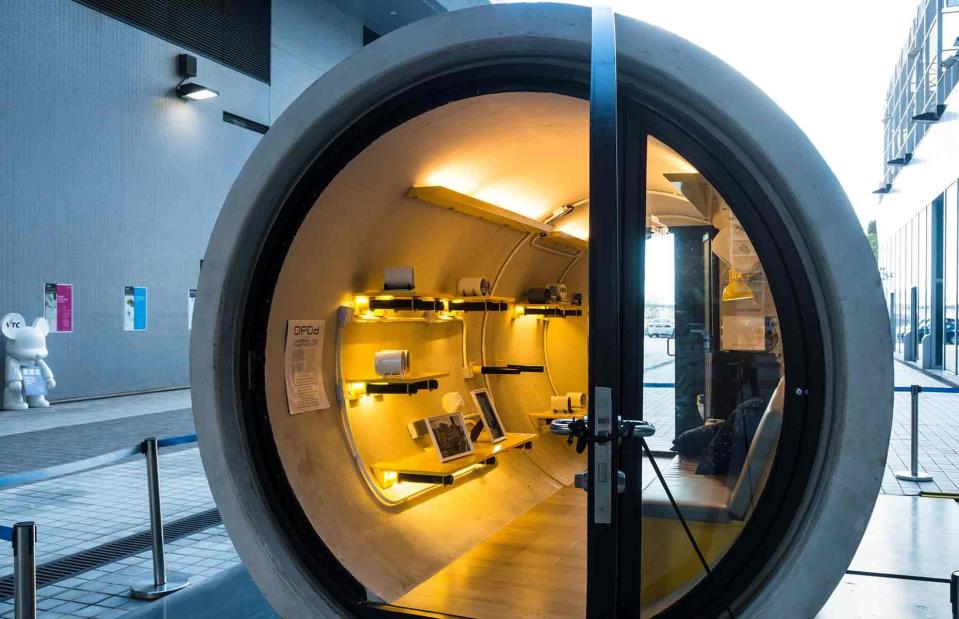
RaymondAsiaPhotography / Alamy
The need to find or create affordable living spaces in such an oversubscribed market has led to some truly inventive solutions. The Opod Tube House is an example of micro-housing that makes use of discarded materials, in this case the city's old drainage. The brainchild of Hong Kong architect James Law, the Tube House nano-flats are constructed within disused concrete water pipes, offering low-cost starter homes for young local residents. But Law’s plan is more ambitious than simply providing cheap housing for his tenants.
OPOD drainpipe houses

REUTERS / Alamy Stock Photo
Law intends to charge rents of HK$3,000 (US$383/£304) a month for his Tube House nano-flats, but told The Guardian, “about HK$1,000 (US$128/£101) of that would be the management costs, the remaining two thousand would be saved on behalf of the young people. It will be invested with interest, and at the end of the tenancy we will return the money to them to help them embark on the next stage of their lives.”
OPOD drainpipe houses
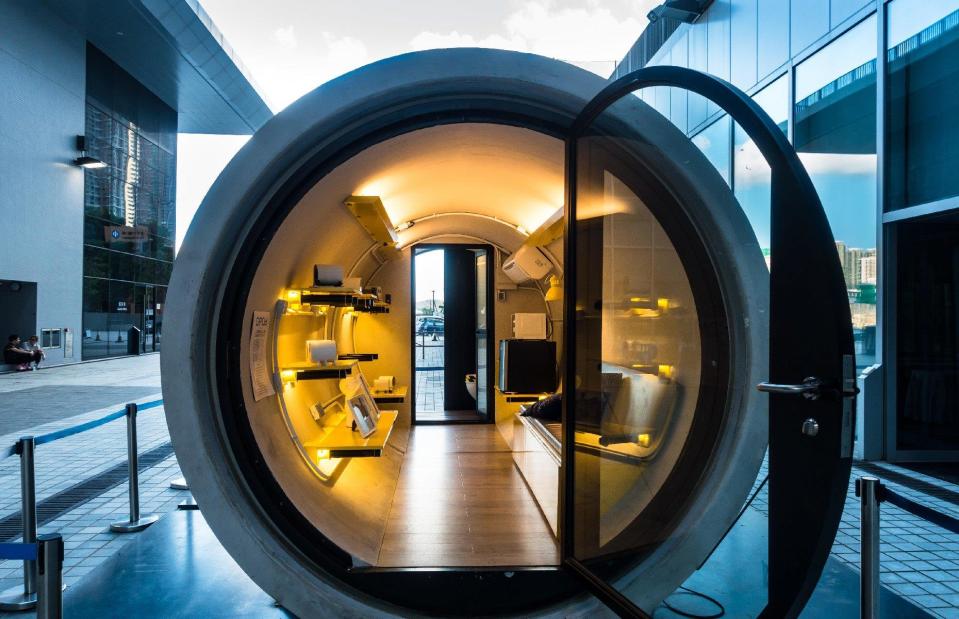
RaymondAsiaPhotography / Alamy
Each Tube House unit boasts a bed, a mini-fridge, storage space and a bathroom compartment within its cosy 100 square feet of living space. A multi-storey OPOD building is already being constructed in Shenzhen, China, while Law is reportedly in discussion with the Hong Kong government over potential sites for OPOD buildings in the space-starved city. Talk about a pipe dream...


